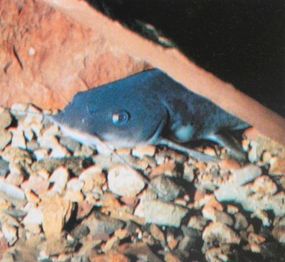Aquarium Aquascaping
The first consideration when decorating an aquarium, or aquarium aquascaping, is the gravel.
The size of the individual pieces of gravel is particularly important if the tank has an undergravel filter. If the gravel is too large, there won't be as much total surface area for the nitrifying bacteria. On the other hand, if the gravel is too small, it will clog with particles easily and restrict the flow of water through the gravel bed.
Advertisement
The best gravel sizes are #2 or #3, which are two and three millimeters in diameter respectively.
Although the color of gravel is a matter of personal choice, neutral colors are more natural and do not compete with the fish for attention. They also help to make the fish more comfortable.
You may notice that many fish are dark on top and lighter on the bottom. This is a form of camouflage called countershading. The fish will be less visible to predators when viewed from above against the dark bottom of a stream or pond, or when viewed from below against the light color of the sky. For this reason, fish feel more secure over dark gravel.
While you are contouring the gravel, you can use rocks and cured pieces of driftwood to create terraces, ledges, and caves. These will add visual interest while providing shelter and hiding places for the fish.
Choose rocks that are not going to alter the chemistry of the water. Your local aquarium store will have a good selection of rocks that are safe for the tank, along with driftwood that has been properly cured. Curing driftwood yourself is a slow, tedious task. Incompletely cured driftwood can pollute the water and kill the fish.

Do not use corals or shells for decorations. These items not only look out of place in a freshwater aquarium but they can also make the water harder and more alkaline than it normally would be. Also, avoid rocks that have rough surfaces or sharp edges that could injure the fish.
It is very important that all rockwork be stable. The base of any large rocks should rest securely on the tank bottom, not on the surface of the gravel bed. Should the rocks fall, the aquarium glass could crack or fish could be injured.
Learn about a few remaining aquarium items in our final section.
